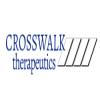Dive Brief:
- In many ways, 2016 was defined by deepening scrutiny of rising prescription drug prices, with companies like Turing, Valeant and Mylan each taking a turn in the spotlight of Congressional criticism and public outcry.
- It's fitting, then, that the past year also featured the continued emergence of biosimilar medicines in the U.S. Biosimilars, highly similar, "copycat" versions of biologic drugs, promise cheaper prices for some of the most prescribed drugs.
- While biosimilars could bring moderately lower prices, they also represent a serious competitive threat to a number of drugmakers, such as Amgen and AbbVie, that are highly reliant on their mainstay biologics.
Dive Insight:
Until the approval of Novartis' Zarxio (filgrastim-sndz) in late 2015, biosimilars hadn't been available in the U.S., although they were common in Europe.
Three more biosimilars cleared the Food and Drug Administration in 2016: Pfizer and Celltrion's biosimilar of Remicade (infliximab), Novartis' copy of Amgen's Enbrel (etanercept) and Amgen's version of AbbVie's best-selling Humira (adalimumab).
So far, only Novartis' Zarxio and Pfizer's Inflectra have been launched to markets. Both reference product developers are contesting the launches in court.
While patent litigation may snarl up the path to market for some inbound biosimilars, the trend is clear. Biosimilars will come to command a greater share of the biologics market, and with that, should begin to cut into lucrative revenue streams for several companies.
Over 60% of AbbVie's product revenue, for example, come from sales of Humira (see chart below). The main composition-of-matter patent in the U.S. for Humira expires this month, and the comparative patent in the E.U. will expire in most European countries in October 2018.

AbbVie plans to defend Humira against Amgen's copy, and believes no single patent expiration will compromise its franchise. Still, AbbVie's case is illustrative of how large an impact successfully launched biosimilars may have.
Amgen has a franchise of its own to defend too, even as it works to boost its own biosimilars. Enbrel makes up over 25% of Amgen's product sales, and almost all of that revenue comes from the U.S. market. Successful entry of Novartis' biosimilar, or one of the several others in development, would be a significant challenge. Zarxio is already cutting into Neupogen sales, despite the ongoing litigation.

Other companies shown in the charts above may not have a direct biosimilar competitor to their main franchise drug. Yet filtering best-seller revenues as a percent of product sales can frame a company's strategy and challenges.
Gilead, for example, is facing a shrinking market for its top-selling hepatitis C drug Harvoni. Sales have fallen and Harvoni makes up a significantly smaller share of Gilead's product sales than before. That, in turn, has put pressure on the company to step up its M&A activity, particularly as the biotech's pipeline fails to bear fruit.
BioPharma Dive plans to publish more charts and data in the coming weeks. An article on pharma companies' R&D expenses was published earlier this week. Stay tuned for more!














